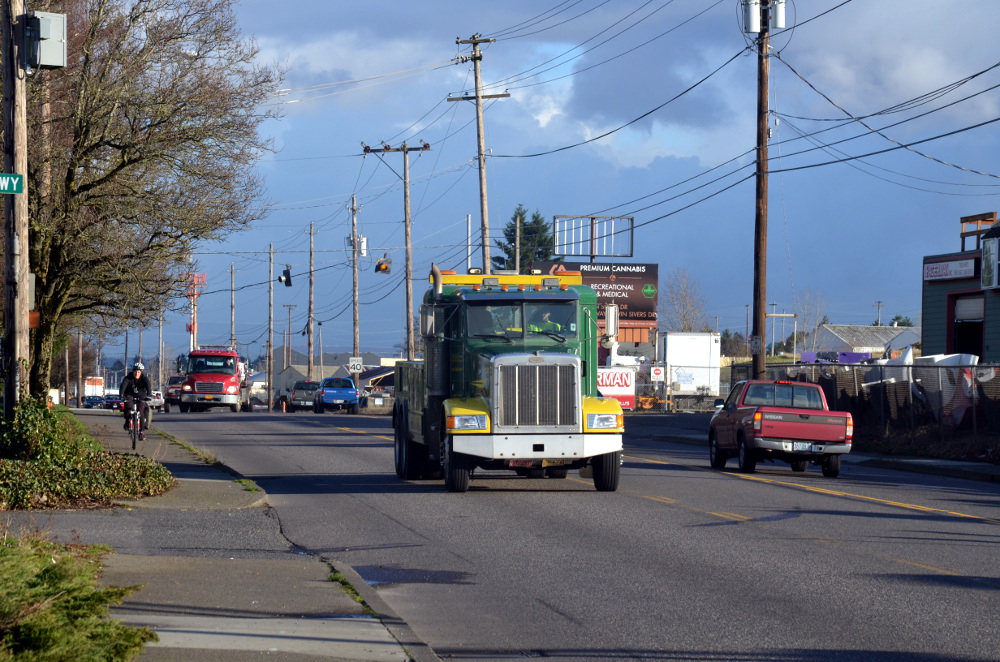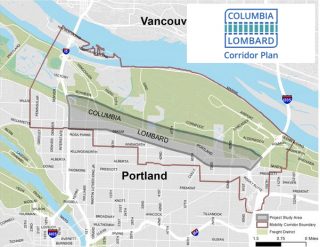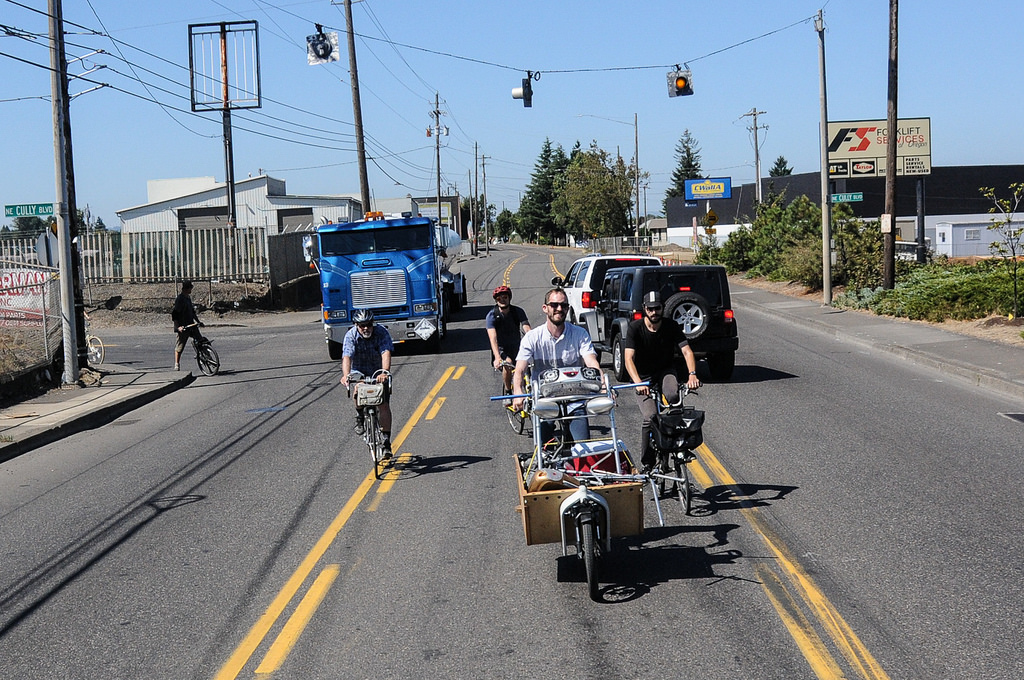
(Photo: Michael Andersen/BikePortland)
The Portland Bureau of Transportation has launched the Columbia/Lombard Mobility Corridor Plan.

(Graphic: PBOT)
If it succeeds, the plan could hasten development of infrastructure projects that expand biking, walking and transit access to major destinations like the Portland International Airport, Oregon Humane Society, and Cully Park, as well as tens of thousands of industrial, middle-wage jobs in the corridor. The outcome of the plan will be to create a prioritized list of projects for future funding and develop a safety strategy.
Currently, NE Columbia Blvd and NE Lombard St between I-5 and I-205 are wide, dangerous, high-speed, arterials. They are incomplete, outdated streets that serve only people using cars and trucks. With better transit service, protected bike lanes, safer crossings, and other updates, Portland could unlock massive benefits that will help us reach our safety, public health, transportation, equity, economic development and climate change goals.
According to the plan’s website, over the next 18 months PBOT and an advisory committee will, “Identify, develop, and prioritize improvements that would make multimodal transportation and freight movement safer and more efficient along the corridor.” Metro’s Regional Transportation Plan has already identified this area as a “mobility corridor,” which is supposed to “function well for all modes of transportation”. If you’ve ever tried to bike or walk in this area, you know we are nowhere close to meeting that standard.

(Photo: Jonathan Maus/BikePortland)
Advertisement
The good news is PBOT seems to already have a solid handle of the problems that currently exist. Here’s what they’ve listed on the plan website:
A lack of separation between modes, outdated roadway designs, and sub-standard infrastructure have led to major safety issues on both Columbia and Lombard. Both streets are on the designated Vision Zero High Crash Network because of high crash rates, especially those involving motor vehicles.
The pedestrian and bicycle networks have major gaps and deficiencies and transit service is currently very limited, which means most commuters or visitors are reliant on personal vehicles that add to traffic congestion and increase cost of living.
Residents of nearby neighborhoods in Northeast Portland have difficulty accessing jobs, parks, and services in the area due to widely spaced and difficult connections across the corridor.
Proposed TriMet bus service on Columbia Blvd would be difficult to access because the street currently lacks adequate pedestrian facilities, crossings, and connections to employers.
At-grade railroad crossings, sub-standard over-crossings, missing connections and signals, and traffic bottlenecks have led to growing concerns about freight mobility and access in the corridor.
The lack of traffic management systems means that freight operators and personal drivers alike do not have adequate information to respond to congestion issues and choose the most optimal routes.
The corridor does not currently have a clear system of mode-specific treatments that would prioritize freight and transit over single-occupancy vehicles.
While the dire need for safe active transportation infrastructure is obvious, this plan will also be pulled in the direction of improving freight movement. The Columbia Corridor Association (CCA), a 501(c)6 nonprofit business association, is a major power-broker that will be paying very close attention to the outcomes. This plan is a good chance for us to show it’s possible for freight and active transportation to co-exist — and even flourish — together.
The CCA’s boundary includes what they claim to be 2,500 businesses and 65,000 jobs. With around 40 percent of those employees living five miles or less from their jobs, there’s massive potential to reduce single-occupancy driving.
During our “Gap Week” coverage in 2016 we identified several gaps in this area and reported how, if closed, more people from the Cully area could access jobs, Marine Drive, ride to the Portland Airport, and more. We also lamented the lack of safe bicycle access around Cully Park (which is sandwiched between Lombard and Columbia) when it opened in summer of 2017.
Imagine a bicycle highway on NE Lombard between Martin Luther King Jr. Blvd and the I-205. Hopefully this planning process won’t be afraid to think outside the box.
For more information, check out the plan on PBOT’s website.
— Jonathan Maus: (503) 706-8804, @jonathan_maus on Twitter and jonathan@bikeportland.org
Never miss a story. Sign-up for the daily BP Headlines email.
BikePortland needs your support.

